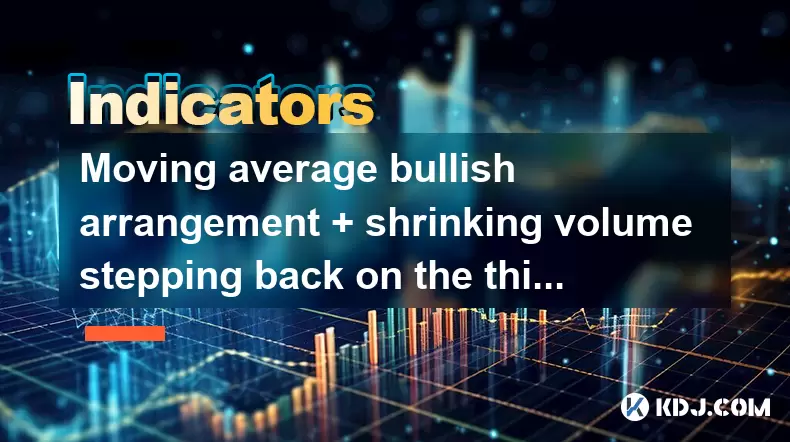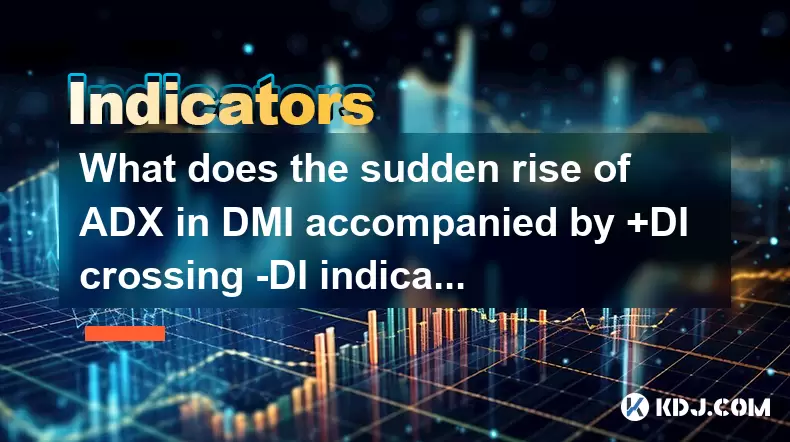-
 Bitcoin
Bitcoin $117400
1.93% -
 Ethereum
Ethereum $3747
3.63% -
 XRP
XRP $3.157
3.09% -
 Tether USDt
Tether USDt $1.000
0.02% -
 BNB
BNB $783.3
3.19% -
 Solana
Solana $186.6
5.64% -
 USDC
USDC $0.9999
0.01% -
 Dogecoin
Dogecoin $0.2375
5.42% -
 TRON
TRON $0.3185
1.32% -
 Cardano
Cardano $0.8191
3.28% -
 Hyperliquid
Hyperliquid $44.43
5.76% -
 Sui
Sui $3.995
9.84% -
 Stellar
Stellar $0.4396
6.27% -
 Chainlink
Chainlink $18.26
4.83% -
 Hedera
Hedera $0.2646
11.88% -
 Bitcoin Cash
Bitcoin Cash $553.5
5.55% -
 Avalanche
Avalanche $24.13
4.73% -
 Litecoin
Litecoin $113.3
1.77% -
 UNUS SED LEO
UNUS SED LEO $8.975
0.11% -
 Shiba Inu
Shiba Inu $0.00001405
5.69% -
 Toncoin
Toncoin $3.319
7.46% -
 Ethena USDe
Ethena USDe $1.001
0.02% -
 Uniswap
Uniswap $10.44
4.98% -
 Polkadot
Polkadot $4.098
4.31% -
 Monero
Monero $328.6
1.87% -
 Dai
Dai $1.000
0.01% -
 Bitget Token
Bitget Token $4.561
2.76% -
 Pepe
Pepe $0.00001261
5.29% -
 Aave
Aave $296.8
4.02% -
 Cronos
Cronos $0.1335
3.28%
Moving average bullish arrangement + shrinking volume stepping back on the thirty-day line support
A bullish moving average stack with shrinking volume on pullbacks to the 30-day MA signals strong uptrend continuation potential in crypto markets.
Jul 25, 2025 at 11:14 pm

Understanding the Moving Average Bullish Arrangement
The moving average bullish arrangement refers to a specific alignment of multiple moving averages on a price chart that signals a potential uptrend. This setup typically involves the short-term moving average (e.g., 10-day), the medium-term moving average (e.g., 20-day), and the long-term moving average (e.g., 50-day or 200-day) arranged in ascending order from bottom to top. When the 10-day MA is above the 20-day MA, and the 20-day MA is above the 50-day MA, this stacking confirms bullish momentum. Traders interpret this as a sign that recent price action is stronger than past averages, suggesting sustained buying pressure. In the context of cryptocurrency markets, where volatility is high, such arrangements help filter out noise and identify higher probability upward moves. The key is not just the current alignment but also the duration of the arrangement—persistent stacking increases the reliability of the signal.
Interpreting Shrinking Volume During Price Pullbacks
When price action experiences a stepping back or pullback while volume shrinks, it often indicates weakening selling pressure. In technical analysis, volume is a critical confirmation tool. A decline in volume during a downward move suggests that bearish participants are losing conviction. In the cryptocurrency market, where large price swings can be driven by fear or hype, shrinking volume on pullbacks acts as a clue that the correction is not supported by strong selling. This behavior is particularly meaningful when it occurs near key support levels such as the 30-day moving average. Traders look for this pattern to distinguish between a healthy consolidation and a potential trend reversal. The ideal scenario is a series of lower price candles accompanied by progressively smaller volume bars, which visually reinforces the idea that the uptrend may resume.
Role of the 30-Day Moving Average as Dynamic Support
The 30-day moving average serves as a dynamic support level in trending markets. Unlike static horizontal support, this moving average adjusts daily, reflecting the average closing price over the past month. In an established uptrend, prices often retreat to touch or slightly dip below the 30-day MA before bouncing back. When this occurs with low volume, it strengthens the case for the MA acting as a floor. Cryptocurrency assets like Bitcoin or Ethereum frequently use round-number MAs (such as 30-day) as psychological and technical reference points. To identify this support in practice:
- Plot the 30-day simple moving average (SMA) on your trading chart.
- Observe whether price approaches this line during corrections.
- Confirm that the candlesticks near the MA show narrow ranges and reduced wicks, indicating balance.
- Ensure that the moving average itself is sloping upward, reinforcing the bullish context.
Combining Indicators: Confirming the Setup
To validate the moving average bullish arrangement + shrinking volume stepping back on the 30-day line support, traders must cross-verify using additional tools. One effective method is applying the On-Balance Volume (OBV) indicator, which tracks cumulative buying and selling pressure. If OBV holds an upward trajectory despite price pullbacks, it confirms accumulation. Another useful tool is the MACD (Moving Average Convergence Divergence). Look for the MACD line to remain above the signal line and the histogram to contract rather than flip negative during the pullback. For precision: - Overlay volume bars directly beneath the price chart and visually compare their height during down moves versus up moves.
- Use a trendline tool to connect recent swing lows and verify that the 30-day MA aligns closely with this rising trend channel.
- Apply a volatility contraction filter by checking if the Average True Range (ATR) is declining, which supports the idea of tightening price action.
Step-by-Step Entry and Risk Management Strategy
Executing a trade based on this pattern requires a structured approach. The goal is to enter when the pullback shows exhaustion near the 30-day MA with shrinking volume. Consider the following steps: - Wait for the price to reach the 30-day moving average after a clear uptrend with a bullish MA stack.
- Confirm that at least two to three consecutive candles show reduced volume compared to prior up moves.
- Look for bullish reversal candlestick patterns such as a hammer, bullish engulfing, or inside bar forming near the MA.
- Place a limit order slightly above the high of the reversal candle to confirm momentum resumption.
- Set a stop-loss below the lowest point of the pullback, ensuring it’s also beneath the 30-day MA to avoid premature exit from minor wicks.
- Position the take-profit level at the most recent swing high or use a risk-reward ratio of at least 1:2 based on entry and stop distance.
- Adjust position size so that the total risk does not exceed 1% to 2% of trading capital per trade.
Monitoring for False Signals and Filter Application
Not every pullback to the 30-day MA results in continuation. False signals occur when volume does not shrink or when the MA stack is not clearly bullish. To reduce risk: - Avoid setups where the 50-day MA is flat or declining, as this suggests lack of broader trend strength.
- Disregard volume patterns if they spike during the pullback—this indicates distribution.
- Use higher timeframes (daily or 4-hour) to confirm the MA alignment before analyzing lower intervals.
- Integrate market context, such as overall Bitcoin dominance or sector-specific news, which can override technical patterns.
- Apply a time filter: only consider setups where the bullish MA arrangement has been in place for at least five trading days.
Frequently Asked Questions
Q: How do I distinguish shrinking volume on a pullback from a full distribution phase?
A: Shrinking volume shows progressively smaller volume bars during down candles, while distribution features large volume on down moves and weak follow-through on up moves. Check if the OBV line is still rising—this supports accumulation.Q: Can this strategy be applied to altcoins with low liquidity?
A: Exercise caution. Low-liquidity altcoins often exhibit erratic volume and whipsaw around moving averages. Stick to assets with consistent daily volume and clear chart patterns.Q: What if the price touches the 30-day MA but the MA stack is not perfectly aligned?
A: The bullish arrangement is essential. If the 10-day MA is below the 20-day MA, the trend is not confirmed. Wait for alignment before considering entry.Q: How do I adjust this setup for different timeframes?
A: On a 4-hour chart, use a 30-period MA instead of 30-day. Ensure volume corresponds to the session—compare volume within the same timeframe, not across different intervals.
Disclaimer:info@kdj.com
The information provided is not trading advice. kdj.com does not assume any responsibility for any investments made based on the information provided in this article. Cryptocurrencies are highly volatile and it is highly recommended that you invest with caution after thorough research!
If you believe that the content used on this website infringes your copyright, please contact us immediately (info@kdj.com) and we will delete it promptly.
- Wall Street's Bitcoin Bonanza: ETF Filings Signal Crypto's Coming-Out Party
- 2025-07-26 15:10:12
- Bitcoin, Cynthia Lummis, and Freedom Money: A New York Perspective
- 2025-07-26 15:10:12
- UK Tech, Bitcoin, and Investment: Decoding the Latest Trends
- 2025-07-26 15:30:11
- UK Crypto Regulation: Will Bitcoin Access Open Up for Retail Investors?
- 2025-07-26 15:30:11
- ChatGPT, Binance Coin, Price Prediction: BNB's Bullish Outlook in 2025?
- 2025-07-26 15:35:12
- Citigroup's Bitcoin Forecast: $135K by 2025 – Are They Right?
- 2025-07-26 15:35:12
Related knowledge

What does it mean that the rebound is blocked after the moving average is arranged in a short position for the first time?
Jul 26,2025 at 10:51am
Understanding the Short-Term Moving Average ConfigurationWhen traders refer to a 'short position arrangement' in moving averages, they are describing ...

What does it mean when the price rises along the 5-day moving average for five consecutive days?
Jul 26,2025 at 08:07am
Understanding the 5-Day Moving Average in Cryptocurrency TradingThe 5-day moving average (5DMA) is a widely used technical indicator in cryptocurrency...

What does it mean when the price breaks through the 60-day moving average with a large volume but shrinks the next day?
Jul 26,2025 at 06:01am
Understanding the 60-Day Moving Average in Cryptocurrency TradingThe 60-day moving average (60DMA) is a widely used technical indicator in the cryptoc...

What does the sudden rise of ADX in DMI accompanied by +DI crossing -DI indicate?
Jul 26,2025 at 01:21pm
Understanding the DMI and Its Core ComponentsThe Directional Movement Index (DMI) is a technical analysis tool used to determine the presence and stre...

What does it mean when OBV continues to hit new highs but the price is stagnant?
Jul 26,2025 at 09:57am
Understanding the On-Balance Volume (OBV) IndicatorThe On-Balance Volume (OBV) is a technical analysis indicator that uses volume flow to predict chan...

What does the golden cross of EMA12 and EMA26 but the low trading volume reflect?
Jul 26,2025 at 06:44am
Understanding the Golden Cross in EMA12 and EMA26The golden cross is a widely recognized technical indicator in the cryptocurrency market, signaling a...

What does it mean that the rebound is blocked after the moving average is arranged in a short position for the first time?
Jul 26,2025 at 10:51am
Understanding the Short-Term Moving Average ConfigurationWhen traders refer to a 'short position arrangement' in moving averages, they are describing ...

What does it mean when the price rises along the 5-day moving average for five consecutive days?
Jul 26,2025 at 08:07am
Understanding the 5-Day Moving Average in Cryptocurrency TradingThe 5-day moving average (5DMA) is a widely used technical indicator in cryptocurrency...

What does it mean when the price breaks through the 60-day moving average with a large volume but shrinks the next day?
Jul 26,2025 at 06:01am
Understanding the 60-Day Moving Average in Cryptocurrency TradingThe 60-day moving average (60DMA) is a widely used technical indicator in the cryptoc...

What does the sudden rise of ADX in DMI accompanied by +DI crossing -DI indicate?
Jul 26,2025 at 01:21pm
Understanding the DMI and Its Core ComponentsThe Directional Movement Index (DMI) is a technical analysis tool used to determine the presence and stre...

What does it mean when OBV continues to hit new highs but the price is stagnant?
Jul 26,2025 at 09:57am
Understanding the On-Balance Volume (OBV) IndicatorThe On-Balance Volume (OBV) is a technical analysis indicator that uses volume flow to predict chan...

What does the golden cross of EMA12 and EMA26 but the low trading volume reflect?
Jul 26,2025 at 06:44am
Understanding the Golden Cross in EMA12 and EMA26The golden cross is a widely recognized technical indicator in the cryptocurrency market, signaling a...
See all articles

























































































